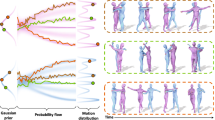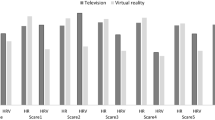Abstract
In this paper, we present a new game interface design “LaserShoot” for collaborative First Person Shooters (FPS) games. Previously, gamers play FPS on computer using keyboard/mouse or joystick along with PC display. Currently, we should resort to CRT display technology for a realistic gun interface, because CRT display can detect gun shooting position by checking the beam direction. However, CRT technology cannot support large screen display due to its manufacturing limitation. To facilitate a collaborative and realistic environment for multi-players, we design a new natural input interface including a laser gun and a large screen display with laser spot detection capability (laser recognizable display). Our interface can create a real life-like collaborative space for gamers. Results suggest that the laser-based interface creates a natural user interface environments which helps beginners to enjoy playing a FPS immediately, and also gives experienced players a new gaming experience.













Similar content being viewed by others
References
Bahlmann C, Burkhardt H (2004) The writer independent online handwriting recognition system frog on hand and cluster generative statistical dynamic time warping. Pattern Anal Mach Intell IEEE Trans 26(3):299–310
Beckhaus S, Blom KJ, Haringer M (2005) A new gaming device and interaction method for a first-person-shooter, in computer science and magic 2005. GC Developer Science Track, Laipzig
CAN specification (2010) http://www.cancia.org/index.php?id=specifications&no_cache=1
Cheok AD, Goh KH, Liu W, Farbiz F, Fong SW, Teo SL, LI Y, Yang XB (2004) Human Pacman: a mobile, wide-area entertainment system based on physical, social, and ubiquitous computing. Pers Ubiquit Comput 8(2):71–81
Cox JF (2001) Fundamentals of linear electronics: integrated and discrete 2nd edition, Thomson learning, Page 91
Dardas NH, Silva JM, El Saddik A (2012) Target-shooting exergame with a hand gesture control. Multimed Tools Appl 70:2211–2233. doi:10.1007/s11042-012-1236-4
CTA Digital Inc (2012) Assault rifle controller for playstation move, http://www.ctadigital.com/item.asp?item=2953
Opara FK et al (2012) Comparative analysis and performance features of plasma, lcd and crt screens: operating features, merit and recommecdations, Acad Res Int 2, no 2, March 2012
Greg Welch and Gary Bishop (2006) An Introduction to the Kalman Filter, NC-Chapel Hill, TR 95-041(July 24, 2006)
Gower JC, Ross GJS (1969) Minimum spanning trees and single linkage cluster analysis. Appl Stat 54–64
Intersence Inc (2006) InertiaCube2, http://www.intersense.com/pages/18/55/
Kasugai K et al (2010) Creating spatio-temporal contiguities between real and virtual rooms in an assistive living environment. Proc Creat 10:62–67
Luque A, Hegedus S (2011) Handbook of photovoltaic science and engineering, Wiley, 2011, Pages 5
MarcoDi N et al (2012) Understanding and using the controller area network communication protocol, Springer New York, Pages 1–24
Olivas, Molina JP, Martínez J, González P, Jiménez AS, Martínez D (2012) Proposal and evaluation of models with and without position for immersive FPS games, In Proceedings of the 13th International Conference on Interacción Persona-Ordenador, Article 52, 2012
P. Rajlich, CAVE Quake II, http://brighton.ncsa.uiuc.edu/~prajlich/caveQuake/
Shin J-p (2002) Optimal stroke-correspondence search method for on-line character recognition. Pattern Recogn Lett 23(5):601–608
Shockley W (1949) The theory of p-n junctions in semiconductors and p-n junction transistors. Bell Syst Tech J 28(3):435–489. doi:10.1002/j.1538-7305
Stellanet Inc (2013) SpectraWiz Spectroscopy, http://www.stellarnet-inc.com/products_software.htm#SpectraWiz®_Spectroscopy_Software
Svelto O (2010) Principles of lasers. Springer 2010:407–408
Tedjokusumo J et al (2010) Immersive multiplayer games with tangible and physical interaction. IEEE Trans Syst Man Cybern Part A Syst Hum 40(1) January 2010
Yoon J-W, Jang S-H, Cho S-B (2010) Enhanced user immersive experience with a virtual reality based FPS game interface. Comput Intell Game IEEE Symp 2010:69–74
Yu FTS, Yin S (eds) (2002) Fiber optic sensors. Marcel Decker, New York
Author information
Authors and Affiliations
Corresponding author
Rights and permissions
About this article
Cite this article
Shim, J.Y., Kim, SW. LaserShoot: a natural shooting interface for FPS gaming using laser recognizable display. Multimed Tools Appl 75, 3409–3423 (2016). https://doi.org/10.1007/s11042-014-2442-z
Received:
Revised:
Accepted:
Published:
Issue Date:
DOI: https://doi.org/10.1007/s11042-014-2442-z




